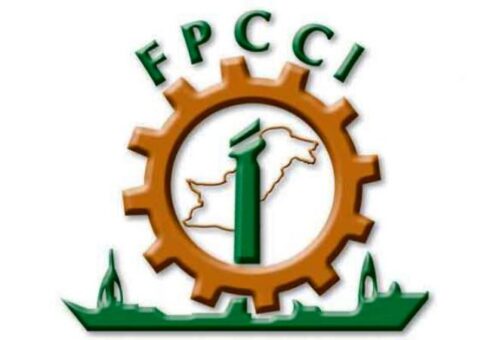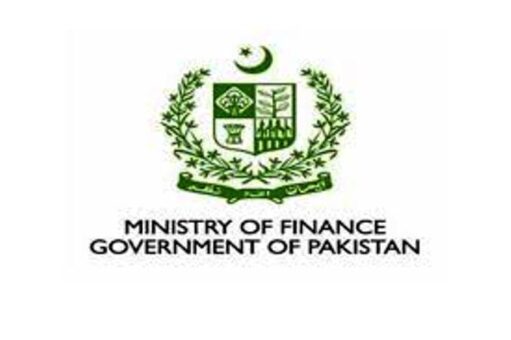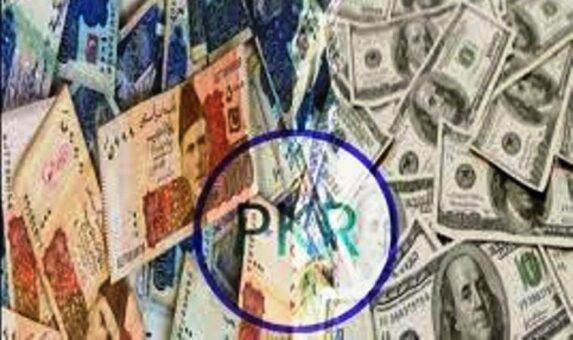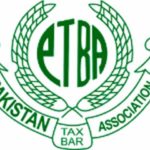KARACHI: Federation of Pakistan Chambers of Commerce and Industry (FPCCI) has expressed concerns over recent significant rise in key policy rate by State Bank of Pakistan (SBP).
In a statement on Wednesday Engr. Daroo Khan Achakzai, President of the Federation of Pakistan Chambers of Commerce and Industry (FPCCI) showed his serious concern over the hiking of policy rate by another 150 basis points in view of prevailing inflation, devaluation of currency and twin deficit in Pakistan.
He added that SBP continues to operate a tight monetary policy despite the clear evidences that this policy strangulates investment and hampered the economic activities in Pakistan in Pakistan.
He underlined that the IMF bailout package will further create burden on poor segment of society in terms of rising utility prices which will ultimately increase inflation in the economy.
At present, every Pakistani possess a debt of one lac fifty nine thousands rupees.
The President FPCCI termed the contractionary monetary policy as an anti-investment policy which has declined the economic activities in the first ten month of the current fiscal year due to declining of large scale manufacturing and service sector.
He indicated that 12.25 percent policy rate is very high compared to regional economies like India 6.0 percent, China 4.35 percent, Sri Lanka 9.0 percent, Thailand 1.75 percent, Indonesia 6.5 percent, Malaysia 3.00 percent etc.
While commenting on the devaluation of currency, he stated that the rising of exchange rate will increases the prices of imports particularly petroleum products which comprises 30 to 35 percent import bill of Pakistan.
He suggested the government to intervene in the economy for currency stabilization and control of inflation. He said that the present inflation rate is 7.0 percent which is high compared to last year same period 3.8 percent; but this inflation is cost push inflation which can’t be controlled through demand management policies.
The major cause of rising inflation in the country is high cost of doing business particularly utility prices, increase in the prices of industrial inputs and shortage of essential items of daily necessity.
The Government should focus to increase the demand for credit by declining interest rates and make easy access to finance. Globally, the aim of monetary policy is to protect the value of the currency in co-ordination with the fiscal policy in order to achieve the objectives of macro-economic stability with constraining inflation and expansion of private sector investment, he added.
The President FPCCI further stated that the government should create its own fiscal space for financing its expenditures instead of borrowing from SBP and other institutions. During the first ten month of year, there was an expansion in private sector credit, but is largely attributed to working capital due to rising of input prices.
This private sector credit should be expanded to agriculture and industrial sector which are showing declining growth trend, he suggested.
Author: Faisal Shahnawaz
-

FPCCI expresses concerns over policy rate hike
-

FBR restructuring proposed to make autonomous body
KARACHI: The government has been proposed to make Federal Board of Revenue (FBR) as an autonomous body on similar line as State Bank of Pakistan.
The Overseas Chamber of Commerce and Industry (OICCI) in its budget proposals for 2019/2020 suggested restructuring of FBR as an independent governing body.
It suggested that FBR should be made an autonomous body on similar lines as State Bank of Pakistan, SECP, and Internal Revenue Services (IRS) of United States.
FBR should operate and work in a corporate governance structure with a Board of Directors, vested with powers like that of the Boards of Public listed companies.
The Chairman of FBR and fifty percent of the Board members may be nominated by the government (Ministries of Finance, Law, and Commerce) and, the remaining fifty percent Board members should be nominated by bodies like OICCI, PBC and ICAP.
A transparent accountability system in tax administration should be introduced, and reasonable independence and empowerment given to various operational positions.
The external audit of FBR should be done annually, by an independent international audit firm whose report should be presented and fully discussed in the Tax Policy Board meeting.
There should also an Internal Audit function within the FBR for an effective ongoing internal audit reporting directly to the independent members of the Board nominated by the Trade bodies.
Apart from revenue collection a key function of the FBR should be to address coordination issues between federal and provincial revenue authorities, with monthly meetings to ensure ease of doing business for taxpayers.
-

Car imports massively fall by 45pc in 10 months
KARACHI: The import of motor cars sharply declined by 45 percent during first ten months of current fiscal year owing to restriction imposed of duty and tax payment through foreign currency account and verification of remittances through banks.
According to officials statistics made available to PkRevenue.com on Tuesday, the import of cars in completely built unit (CBU) was at $213.37 million during July – April 2018/2019 as compared with $388.835 million in the corresponding period of the last fiscal year.
The ministry of commerce through SRO 52(I)/2019 dated January 15, 2019 imposed the restriction of payment of duty and taxes through foreign remittances.
The SRO stated: “All vehicles in new/used condition to be imported under transfer of residence, personal baggage or under gift scheme, the duty and taxes shall be paid out of foreign exchange arranged by Pakistan Nationals themselves or local recipient supported by bank encashment certificate showing conversion of foreign remittance to local currency, as under,
a. the remittance for payment of duties and taxes shall originate from the account of Pakistani national sending the vehicle from abroad; and
b. the remittance shall either be received in the account of Pakistani national sending the vehicle from abroad or, in case, his account is non-existent or inoperative, in the account of his family.”
The customs sources said that the besides restrictions of the ministry of commerce the import of cars was also declined due to restriction on non-filers of income tax in registration with provincial registration authorities.
Through Finance Act, 2018 the government imposed ban on non-filers for registering both imported and locally assembled cars. The government, however, lifted the ban on non-filers through Finance Supplementary (Second Amendment) Act, 2019 only for locally assembled cars.
-

FBR suggested reducing income tax rate for banks
KARACHI: Federal Board of Revenue (FBR) has been advised to reduce income tax rates for banking companies in line with general corporate tax rates.
The Overseas Investors Chamber of Commerce and Industry (OICCI) in its tax proposals for budget 2019/2020, said that the banking sector tax rates have not been reduced in line with the general corporate tax rates.
Furthermore, Finance Supplementary (Second Amendment) Bill 2019, proposed to again amend the First Schedule to the Income Tax Ordinance 2001, whereby, Super Tax of 4 percent is applicable on banks from tax year 2018 to tax year 2021.
The banks, in compliance with the prevailing taxation regime have already closed the tax year 2018 (accounting year 2017) and income tax returns have already been duly filed/assessed.
As a result of the proposed abovementioned retrospective application from tax year 2018 (accounting year 2017), banks would now have to effectively pay super tax for two years or 8 percent instead of 4 percent in tax year 2019 i.e. 4 percent already paid in advance for tax year 2019 along with retrospective charge of 4 percent now being proposed for tax year 2018.
The OICCI suggested that the tax rates of the banking sector should be aligned with other sectors.
It is recommended, application of super tax on tax year 2018 should be removed to avoid the double charge of super tax in tax year 2019.
Furthermore, it is requested that the same overall relief on super tax, granted to other industries, is also provided to the banking sector as well.
-

Budget deficit swells to 5 percent in nine months, higher than fiscal year target
ISLAMABAD: The country’s budget deficit soared to 5 percent in the first nine months of current fiscal year, which is already higher than the full year target of 4.9 percent.
According to statistics issued by the ministry of finance on Tuesday, the budget deficit for July –April 2018/2019 increased to five percent, which was 4.3 percent in the same period of the last fiscal year.
According to the ministry the total revenue to the GDP was 9.3 percent during first nine months whereas the expenditure to the GDP swell to 14.3 percent of the GDP during the period under review.
The statistics showed that the total revenue were at Rs3,583 billion during July – March 2018/2019, out of which tax revenue were at Rs3,162 billion. The collection of tax by the federal government was at Rs2,874 billion and provincial share was Rs287.7 billion.
Total expenditure during the period was Rs5,506 billion. The current expenditure was at Rs4,798 billion and development expenditure was at Rs684 billion.
-

Current account deficit narrows by 27 percent in July – April: SBP
KARACHI: Pakistan’s Current Account Deficit has narrowed by 27 percent during first 10 months of current fiscal year owing to fall imports and higher inflows of foreign remittances.
The current account deficit declined to $11.586 billion during July – April 2018/2019 as compared with deficit of $15.864 billion in the corresponding period of the last fiscal year, State Bank of Pakistan (SBP) said on Tuesday.
The fall in current account deficit is mainly attributed to reduction in trade deficit. The trade deficit reduced by 12.82 percent to $26.3 billion during first 10 months of current fiscal year as compared with $30.169 billion in the corresponding months of the last fiscal year.
The import bill fell by 8 percent to $45.47 billion during July – April 2018/2019 as compared with $49.36 billion in the same period of the last fiscal year. However, exports growth was flat at $19.169 billion when compared with $19.19 billion in the same period of the last fiscal year.
The foreign remittances sent home by overseas Pakistan grew by 8.45 percent to $17.87 billion during first 10 months of the last fiscal year as compared with $16.48 billion in the same period of the last fiscal year.
-

Pakistan’ FDI declines by 52 percent in 10 months
KARACHI: Foreign Direct Investment (FDI) has declined by 52 percent during first 10 months of current fiscal year owing to higher repatriation of profits by corporate sector.
The total FDI was recorded at $1.376 billion during July –April 2018/2019 as compared with $2.849 billion in the corresponding period of the last year, showing 51.7 percent decline, according to data released by State Bank of Pakistan (SBP) on Tuesday.
The inflows under FDI registered 22 percent decline to $2.684 billion during first 10 months of current fiscal year as compared with $3.44 billion in the same period of the last fiscal year.
The outflows on the other hand increased by 121 percent to $1.308 billion during July – April 2018/2019 as compared with $591 million in the same period of the last fiscal year.
The total foreign private investment registered 64.3 percent decline to $968 million during July-April 2018/2019 as compared with $2.713 billion in the same period of the last fiscal year.
The portfolio investment posted 200 percent decline during the period under review to outflow of $408 million as compared with the outflow of $136.2 million.
Foreign public investment witnessed 140.4 percent decline to $2.45 billion during July – April 2018/2019 as compared with outflow of $990.6 in the same period of the last fiscal year.
-

Stock market gains 192 points on positive sentiments
KARACHI: The stock market ended with gain on Tuesday continuing the positive sentiments for second consecutive day.
The benchmark KSE-100 index closed at 34,442 points as compared with previous day’s closing of 33,250 points with gain 192 points.
Analysts at Topline Securities said that second consecutive session closed in positive trajectory, as bourse gained 192 points (0.57 percent), closing at 33,442 index level as creation of ‘Stock Market Support Fund’ triggered investors to rush for state owned stocks like, OGDC, SSGC, SNGP and PSO.
These three stocks closed near to their upper locks in today’s session.
Steel sector also outperformed, where ASTL, CSAP, and MUGHAL closed at their upper locks. Additionally, ISL and ASL closed to near to upper lock.
Trading activity remained dull as volume went down by 7 percent, similarly, value decline 13 percent. Unity, TRG and KEL remained the volume leader of today’s session with cumulative volume of 40mn shares.
Out of 307 actively traded scrips today, 173 closed positive, while 133 remained negative.
-

Rupee hits all time low at Rs152/dollar in interbank
KARACHI: The Pak Rupee has plunged to another historic low against dollar on Tuesday owing to panic in the financial markets.
The rupee fell by Rs2.35 to end at Rs152 to the dollar from last day’s closing of Rs149.65 in interbank foreign exchange market.
The dollar made a new historic high to reach Rs152 and likely to fell more due to higher demand.
The interbank foreign exchange marked was initiated in the range of Rs151.00 and Rs152.00.
The market recorded a high of Rs152.50 and low of Rs151.75 and closed at Rs152.00.
The exchange rate in open also witnessed historic low of Rs153.50 to the dollar in the cash ready market.
